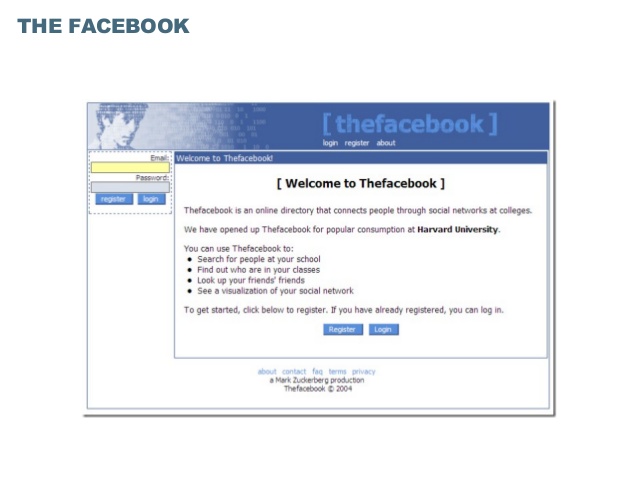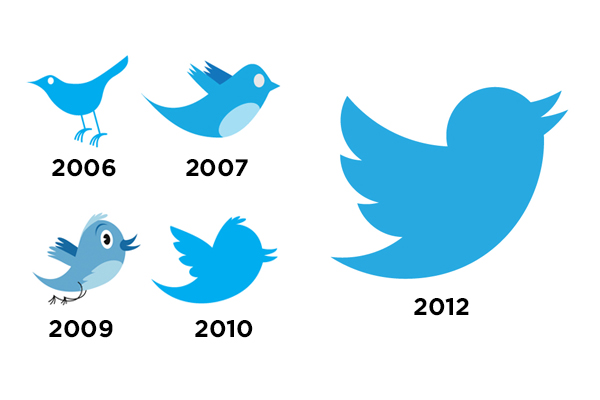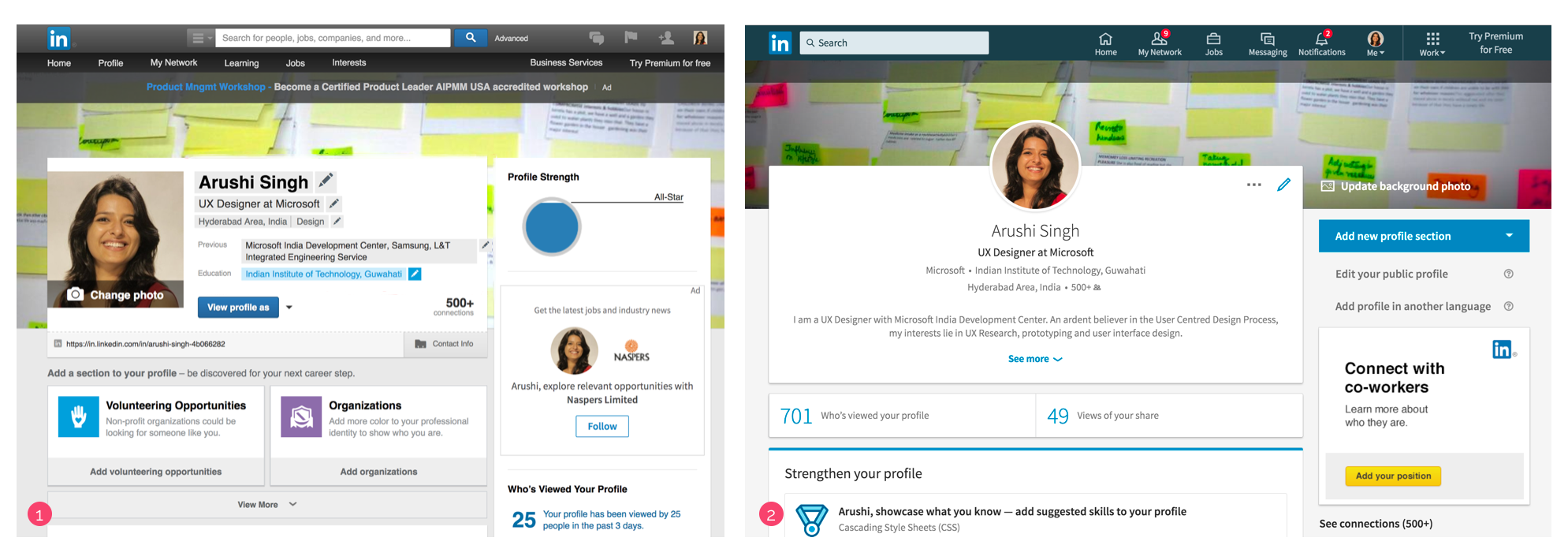These days, it’s hard for anyone to go without social media. It’s such an important part of how we communicate with people. Businesses use it to connect with customers and prospects, your neighbor uses it to connect with their friends, even your grandmother (probably) uses it to connect to you. Like it or not, social media has become an important asset to our social lives.

But it was a different story in the early 2000s. At the start of the decade, more and more people had access to computers, which made it an experimental age for global communication. E-mail had been around for a while, but entrepreneurs like Mark Zuckerberg and Jack Dorsey were pushing for new and innovative ways to connect with people—say goodbye to throwing bottles in the sea and say hello to chat rooms. These new ways of meeting and interacting with people were something the world had never seen before. Rather than blindly send an email to a faceless stranger, you can now look at a person’s profile picture and bio. With social media, you can get to know someone before you actually get to know them.
Today, we’re going to dive into the rise and evolution of the different social media platforms that you love to surf.
From TheFacebook to Facebook
I’m sure most of us are familiar with Mark Zuckerberg’s brainchild (some of us might even be a little too familiar). Zuckerberg teamed up with a few other Harvard students to create a platform that would allow fellow students to search for others at their school, see who was in their classes, and visualize their in-person social network. In 2004, the homepage of Thefacebook said “We have opened up Thefacebook for popular consumption at Harvard University”. A year later, they slowly started opening up Thefacebook for other universities to use. Some of you might remember checking the login page to see if your school was added to the list. And remember poking?

After Zuckerberg dropped out of Harvard to manage the newly-renamed Facebook full-time, the newsfeed, marketplace, and comment liking were all introduced. In 2006, Facebook users started increasing by at least 20 million each year. And in 2009, Facebook became the most popular platform in the world with 350 million users. Facebook went from Harvard to global in less than 10 years.
![]()
And from 2009 to the present day, Facebook has only lengthened its stride by becoming the fourth largest company in the S&P-500. For an online platform in the 90s, this would have been unimaginable. The acquisition of Instagram in 2012 aided its claim to fame, as it had already become more popular for younger generations. Facebook’s competitive advertising system has helped many small businesses get their names out there, and it is also an all-around good place to connect to the people you love. Facebook has come a long way since its birth at Harvard, and really, what’s not to ‘like’ about it?
From Twttr to Twitter
2006 Twttr is nearly unrecognizable to the Twitter we know and love today. The original intent of Twttr was to enable users to share daily status updates with friends and acquaintances. Though it is still used this way, a recent poll stated that 71% of Americans also use it for their daily news. When Jack Dorsey first suggested the idea of Twttr, he realized he was creating something original. The idea of microblogging was uncharted territory—he and his fellow creators had no idea how it would evolve.
just setting up my twttr
— jack (@jack) March 21, 2006
After Dorsey’s first tweet “just setting up my twttr,” the platform took off, gaining more and more momentum each year. The tipping point for Twitter’s popularity took place in 2009 at The South by Southwest interactive conference. After the event, the number of tweets per day went from 20,000 to 60,000. A complete revamp, “New Twitter,” came out in 2010, featuring the retweet command along with pictures and videos embedded in the feed. It wasn’t too long before the word “tweet” came to mean more than bird banter and was added to the dictionary.
In 2013, Twitter launched Vine, which allowed users to shoot and share a six-second video with ease. Users could microblog and micro-video their lives! Twitter’s focus on short media influenced the social media landscape as a whole to be shorter and more digestible.
Nowadays, it’s hard to be a person of interest, candidate, or notable business without a Twitter handle. With 335 million users, it’s an effective way to connect with prospects and interact with customers. It produces feedback, creates brand identity, and allows anyone to reach a wide audience. With so many influential people using it, it’s no wonder that Twitter has become the main news source for most Americans.
 Twitter has become popular media for both personal microblogging and instant global news. Now that’s worth a retweet!
Twitter has become popular media for both personal microblogging and instant global news. Now that’s worth a retweet!
LinkedIn – Social Media in a Suit
LinkedIn is a well-dressed outlier from other platforms. It turns its nose up at cat photos and instead uses the newsfeed for professional networking. LinkedIn has replaced walking into offices with a resume with online interactions before an interview. Since 2002, it has been LinkedIn’s goal to connect professionals and make more employer-to-job-seeker relationships possible. The newsfeed has also evolved into a place for effective B2B interaction where businesses can network and benefit from each other’s products.

LinkedIn celebrated its first month of profitability three years after its initial launch and has since become the world’s largest professional network with 756 million members throughout 200 countries. In today’s world, it’s better to be linked in than to be linked out!
MySpace – from king to nothing
While these social media platforms have made tremendous progress since launching in the 2000s, MySpace has declined. Many of you might remember it being the most popular social website in the early 2000s, so what changed?

MySpace was the largest social website in the world from 2005 to 2008 and was the first social media platform to have a global user base. Because of this, its influence on pop culture and music was critical to many companies, including YouTube, who would not be as successful as they are today without MySpace. After they were acquired by News Corp in 2005, MySpace grew exponentially and by 2006, about 200,000 new users were signing up each day.
The platform took a 180-degree turn in 2008 when Facebook overtook MySpace in the Alexa rankings and since then, the company has experienced continual losses. There are a few explanations for this downturn: MySpace built an audience around music and entertainment, while Facebook and Twitter continually added new features to improve their website’s experience. Others suggest that MySpace’s advertising deal with Google made the site slower and more difficult to use. Either way, we can see that their success took a dramatic downturn, so if you still have a MySpace, keep it your space.
Other 2000s social sites include Friendster, hi5, and FriendFeed. They all started similar to Facebook intending to create profile pages and personalized newsfeeds to connect with friends. These platforms have since diverged and become dating sites, gaming sites or were eventually dissolved entirely. The early 2000s was a race to see which social media sites could quickly evolve with their audience’s wants and needs and these sites couldn’t keep up with the demands.

At Verb, we celebrate the rise of influential social media companies because they are tools for our success as a company. We’ve learned from the successes of these companies, and our Verb tools make it easier than ever to use social media innovation to build a business. With the help of social media, we ensure that our clients and customers have the best experience possible.
In the early 90s, we couldn’t have imagined a world with social media and by the end of 2010, we couldn’t imagine a life without it. At this point, social media has unlimited potential for how it will evolve and influence us in the future. With this kind of transformative technology, who knows where it will take us from here?
Sources:
https://www.eonline.com/news/736769/this-is-how-facebook-has-changed-over-the-past-12-years
https://www.brandwatch.com/blog/history-of-facebook/
https://www.bostondigital.com/insights/tweet-twist-evolution-twitter
https://blog.interactiveschools.com/blog/the-evolution-of-twitter
https://en.wikipedia.org/wiki/Myspace
https://thenextscoop.com/linkedin-evolution-marketing-tool/
About the Author
Megan Anderson is a yogi, flutist, and writer. She enjoys a good turn of phrase and can never have enough books to read. She is also Verb’s newest copywriter on the Creative Team!
